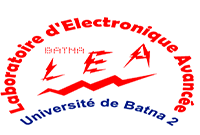Citation:
Abstract:
The numerical simulation tool SCAPS-1D was used to analyze perovskite solar cell having the architecture ITO/ PEDOT:PSS or GO /CH3NH3PbI3-xClx/ PCBM /Au contains inverted planar hetero-junction device. In this work, we investigated the effect of inserting the Graphene Oxide (GO) as Hole Transport layer (HTL) on the performance of perovskite solar cells. Simulation results show that the use of GO as a hole transport layer is efficient. The efficiency of PSCs based on GO HTL was increased by about 1.6 % compared to the conventional PEDOT:PSS HTL device. The obtained results of optimizing the thickness of GO HTL exhibited an optimum value around 10 nm with an efficiency of 12.35 %, Voc of 1.19 V and FF of 54.8 %. We have also shown that the performance of device for high GO carrier density is a better than with low ones. In addition, increasing the temperature beyond the optimum value obtained around 320 K for both HTL materials (GO and PEDOT:PSS) has detrimental effect on the performance of the perovskite solar cells however the device is more sensitive to the temperature with PEDOT:PSS than the GO ones. The effect of band gap of GO on the performance of device is also studied. The obtained results underline the determining role playedby this parameter with an optimum value around 3.25 eV.
